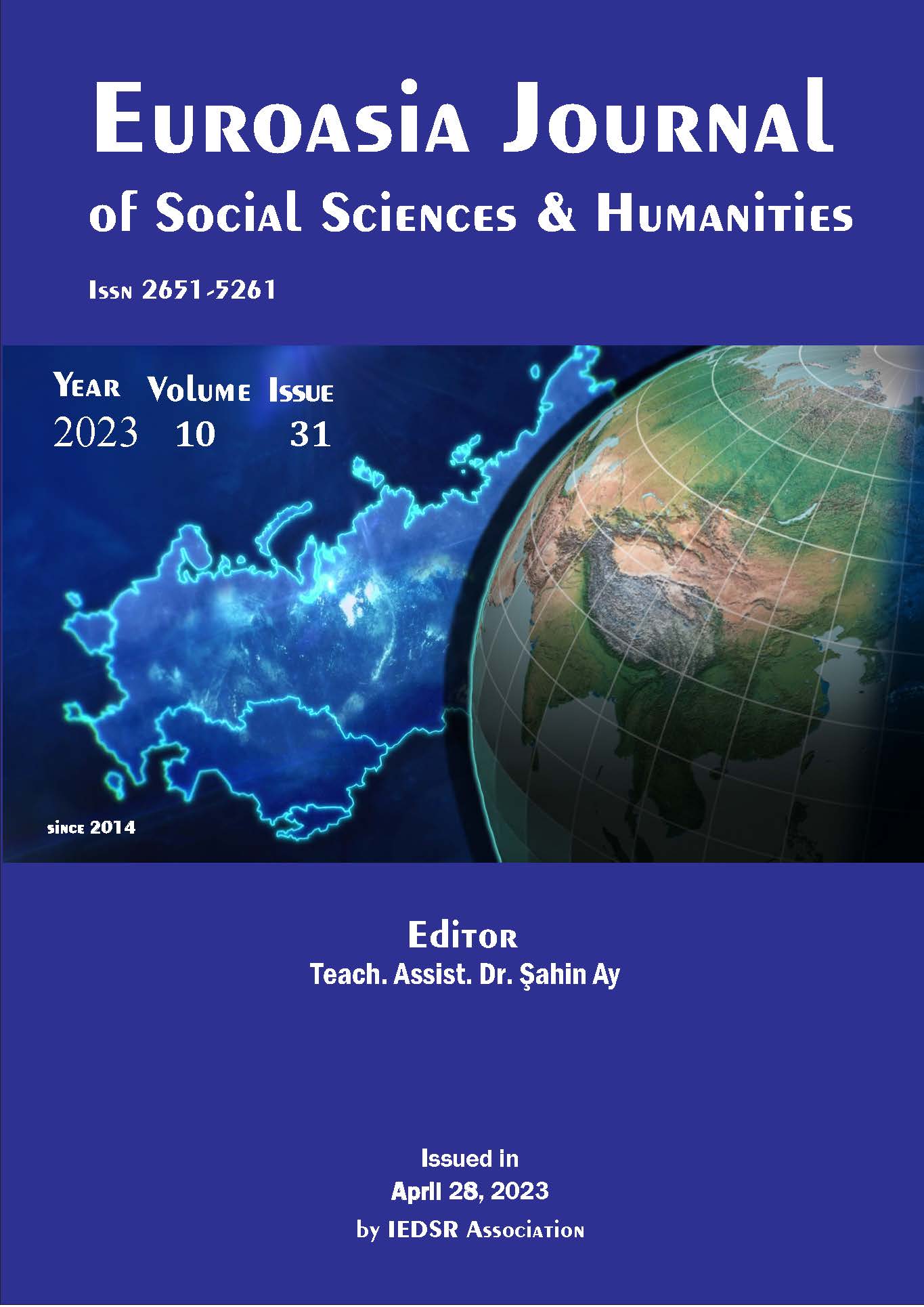The Relationship Between Suicide Risk and Coping Strategies Among Patients with Depression
DOI:
https://doi.org/10.5281/zenodo.7942176Keywords:
Suicide, Depression, Coping StrategiesAbstract
The aim of study is to determine the relationship between suicide risk and coping strategies with stress in depressed patients.
This descriptive study includes 102 patients. Data were collected by “Beck Suicidal Ideation Scale-BSIS” and “Stress Coping Strategies Scale-SCSS.” Descriptive statistics and T-test and ANOVA were applied in the comparison of the scale point averages for the independent groups. Kruskal-Wallis and Mann Whitney U tests were used in the analysis of nonparametric measurements. The relationships among the measures were tested via Pearson Correlation.
Significant differences were determined among the BSIS, age, educational background, marital status, family type, suicide history, number of suicides, suicide type and suicide history in the family. Significant differences were discovered between the presence of previous suicide attempts and leaving a note prior to the suicide and the desperate approach as measured on the SCSS subscales, between the optimistic approach and the presence of previous attempts, between the social support and age, and among the marital status, family type and the presence of previous attempts. A significant negative relationship was determined between the BSIS total point and the SCSS optimistic approach.
It is concluded that depressed patients have quite high risks and use much more passive strategies for emotions in order to cope with stress. Improving coping skills and providing effective emotion regulation by reducing stress level will help preventing suicide and lessening the intensity of depression.
Downloads
References
American Psychological Association (APA). (2003). Practice Guidelines Assessment and Treatment of Patients with Suicidal Behaviors. http://psychiatryonline.org Accessed 7 September 2020
Apaydın, H., Özdemir, Ş., & Ünal, A. (2016). İntihar girişiminde bulunan bireylerde bazı değişkenlerle intihar girişimi ilişkisi. Amasya Üniversitesi İlahiyat Fakültesi Dergisi. 7, 46. doi: 10.18498/amauifd.254001
Avcı, D., Sabancıogulları, S., & Yılmaz, F. T. (2016). Investigation of the relationship between suicide probability in inpatients and their psychological symptoms and coping strategies. Neurosciences (Riyadh, Saudi Arabia). 21(4), 345-351. doi:10.17712/nsj.2016.4.20150727
Bachmann, S. (2018). Epidemiology of suicide and the psychiatric perspective. International Journal of Environmental Research and Public Health. 15, 1425. doi: 10.3390/ijerph15071425
Beck A. T., Kovacs, M., & Weissman, A. (1979). Assessment of suicidal intention: The Scale for Suicide Ideation. J Consult Clin Psychol. 47, 343-352.
Beghi, M., & Rosenbaum, J. F. (2010). Risk factors for fatal and nonfatal repetition of suicide attempt: a critical appraisal. Current opinion in psychiatry. 23(4), 349-355.
Biggs, A., Brough, P., & Drummond, S. (2017). Lazarus and Folkman's Psychological Stress and Coping Theory. In book: The Handbook of Stress and Health: A Guide to Research and Practice. 351-364. doi: 10.1002/9781118993811.ch21.
Ercan, S., Aksoy, M., Yalçın, A., & et al. (2016). Ankara’da acil servislere başvuran intihar girişim olgularının sosyodemografik ve klinik özellikleri, Bilişsel Davranışçı Psikoterapi ve Araştırmalar Dergisi. 1, 5-12.
Hafferty, J. D., Navrady, L. B., Adams, M. J. & et al. (2019). The role of neuroticism in self-harm and suicidal ideation: results from two UK population-based cohorts. Social Psychiatry and Psychiatric Epidemiology. 54(12), 1505-1518. doi: 10.1007/s00127-019-01725-7.
Hawton, K., Casañas, I., Comabella, C., Haw, C., & Saunders, K. (2013). Risk factors for suicide in individuals with depression: A systematic review. Journal of Affective Disorders. 147, 17-28. doi: 10.1016/j.jad.2013.01.004.
Karataş, Z., & Çelikkaleli, Ö. (2018). Beliren yetişkinlikte intihar olasılığı: stresle başetme, öfke ve cinsiyet açısından bir inceleme. Mersin Üniversitesi Eğitim Fakültesi Dergisi. 14(1), 450-462.
Keliat, B. A., Tololiu, T. A., Daulima, N. H. C., & Erawati, E. (2015). The influence of the training of coping skills for stress on self-control and intensity of depression among adolescents with suicide risk. International Journal of Advanced Nursing Studies. 4(2), 110.
Kim, S., Choi, K. H., Lee, K.S. & et al. (2020). Risk Factors for Serious Suicide Attempts with High Medical Severity. Suicide and Life-Threatening Behavior. 50(2), 408-421. doi: 10.1111/sltb.12597.
Knafo, A., Guilé, J. M., Breton, J. J. & et al. (2015). Coping strategies associated with suicidal behaviour in adolescent inpatients with borderline personality disorder. Canadian Journal of Psychiatry. Revue Canadienne de Psychiatrie. 60(2 Suppl 1), S46.
Konkan, R., Erkus, G. H., Guclu, O., & et al. (2014). Coping strategies in patients who had suicide attempts. Archives of Neuropsychiatry. 51, 46-51.
Öncü, B. (2017). İntihar davranıșı: epidemiyoloji ve risk etmenleri. Psikiyatride Güncel. Türkiye Psikiyatri Derneği Sürekli Eğitim/Sürekli Mesleki Gelişim Dergisi. 7(1), 1-13.
Özcelik, H.S., Özdel, K., Bulut, S.D., & Örsel, S. (2016). The reliability and validity of the Turkish version of the Beck Scale for Suicide Ideation (Turkish BSSI). Klinik Psikofarmakoloji Bülteni-Bulletin of Clinical Psychopharmacology. 25(2), 141-150. doi: 10.5455/bcp.20141214105009
Öztürk, M. H., Yüksel, N., & Utku, Ç. (2018). Şizofreni hastalarında intihar girişiminin bilişsel işlevler, umutsuzluk ve iç görü ile ilişkisi. Anadolu Psikiyatri Dergisi. 19(3), 256-263.
Parekh, R. (2019). American Psychological Association. Suicide Prevention. https://www.psychiatry.org/patients-families/suicide-prevention. Accessed 8 June 2019.
Şahin, N. H.,& Durak, A. (1995). Üniversite öğrencileri için bir stresle başa çıkma tarzı ölçeği. Türk Psikoloji Dergisi. 10(34), 56-73.
Shao, R., He, P., Ling, B. & et al. (2020). Prevalence of depression and anxiety and correlations between depression, anxiety, family functioning, social support and coping styles among Chinese medical students. BMC Psychology. 8(38), 1-19.
Stallman, H. M. (2018). Coping planning: a patient-centred and strengths-focused approach to suicide prevention training. Australasian Psychiatry. 26(2), 141-144. doi: 10.1177/1039856217732471.
Tarsuslu, B., & Durat, G. (2018). Erkeklerde depresyon, intihar, yardım arama ve iyi oluş. Journal of Human Rhythm. 4(2), 80-87.
Türkiye İstatistik Kurumu. (2016). İntihar İstatistikleri. TÜİK Haber Bülteni. Sayı: 215216. http://www.tuik.gov.tr/PreHaberBultenleri.do?id=21516. Accessed 7 September 2020
World Health Organization (WHO). (2014). Preventing suicide a global imperative. Luxembourg: WHO Library Catalog.
World Health Organization (WHO). (2020). Suicide. https://www.who.int/news-room/fact-sheets/detail/suicide. Accessed 2 September 2020
Downloads
Published
How to Cite
Issue
Section
License
Copyright (c) 2023 EUROASIA JOURNAL OF SOCIAL SCIENCES & HUMANITIES

This work is licensed under a Creative Commons Attribution-NonCommercial 4.0 International License.

